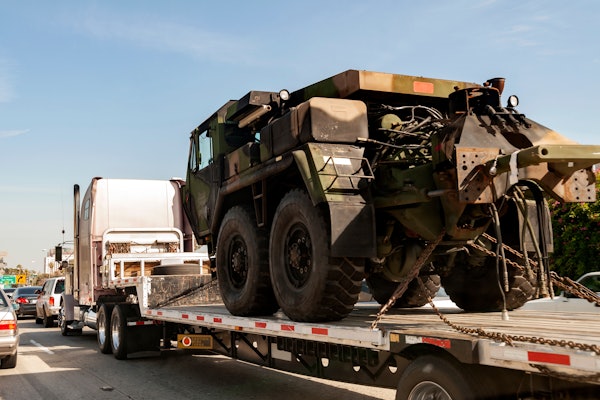For the second consecutive month, Class 8 truck orders dropped in North America. Preliminary numbers released by ACT Research showed that Class 8 net orders in July were 13,400 units, down 8% month-over-month and 13% year-over-year.
FTR Intelligence indicated that Class 8 preliminary net orders in July totaled 12,400 units, down 6% month-over-month and 7% year-over-year.
[Related: Trailer orders plummet, but truck pre-buy taking shape]
Heavy orders continued at expected levels in July, said Kenny Vieth, ACT’s president and senior analyst. Historically, July is the worst month of the year for Class 8 orders, resulting it receiving the highest seasonal adjustment factor, nearly 24% this year. With the seasonal factor, Vieth noted it raises July’s seasonally adjusted intake to 17,500 orders, reducing the month-over-month decline to 3.7%.
FTR also noted that July’s orders fell slightly below seasonal expectations, putting the year-to-date performance just under the replacement demand level, with an average of 19,400 net orders per month. The decline is expected given strong order activity in the first five months and the typically weak seasonal order period.
[Related: Pre-buy and demand for equipment in Mexico likely influenced Class 8 truck orders bump in May]
After averaging nearly 16,000 units from April to June, FTR said that orders have slowed to just under 15,000 units in the most recent three months. As a result, fulfillment of build slots for Class 8 trucks continues to decline. Orders are now down year-over-year for the second consecutive month, but due to strong early-year performance, net orders for 2024 YTD are still up 18% year-over-year.
“OEMs experienced a somewhat mixed market this month with vocational markets mildly underperforming conventional, but the overall picture was steady,” said Dan Moyer, senior analyst, commercial vehicles, FTR.
Moyer said that despite stagnant freight markets, fleets are still investing in new equipment, though at a slower rate. Year-to-date order levels are just below historical averages and seasonal expectations, with market fundamentals staying relatively stable based on these preliminary orders.
“We expect to see further reductions in backlogs once the final Class 8 market indicators are released later this month, as well as continued growth in an already-record level of inventory,” said Moyer. The pressure on OEMs to reduce build rates is mounting, he added.
Vieth added that challenges facing the U.S. sector of the North American commercial vehicle industry persisted throughout the first half of 2024 and arguably worsened at the start of the second half.
“Preliminary results of public TL carriers’ Q2 performance are only encouraging in the sense that the nominal results were up from Q1,” said Vieth, adding, there were record-high inventories in both the medium- and heavy-duty markets. Despite these conditions, Vieth said it was surprising to see the “upside” on order activity. “As was the case in June, July’s orders were more closely aligned with data-driven expectations.”













